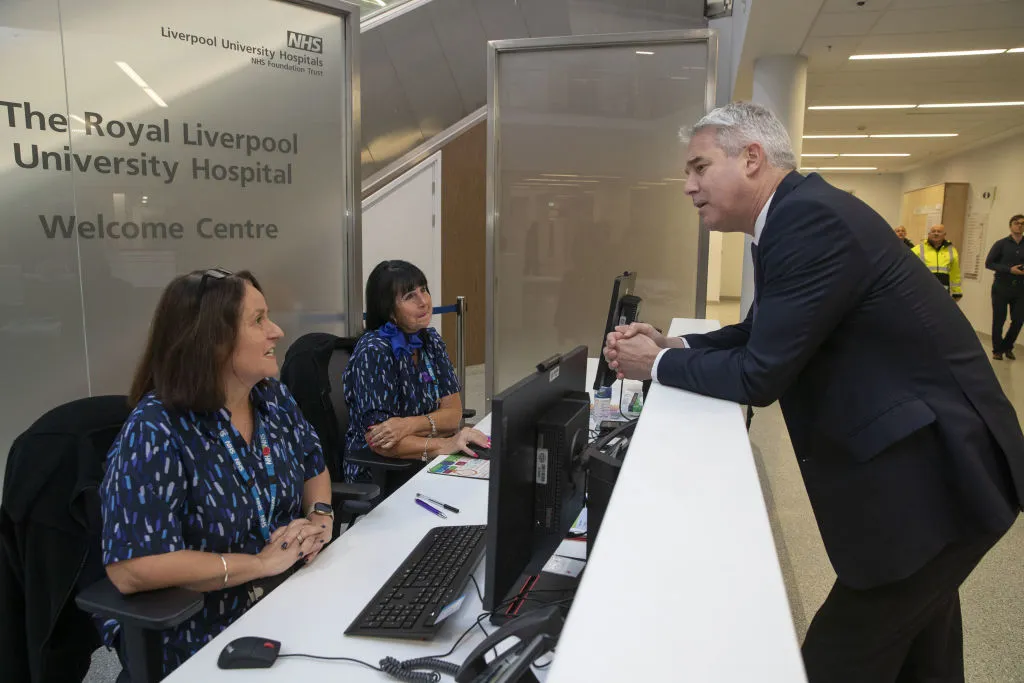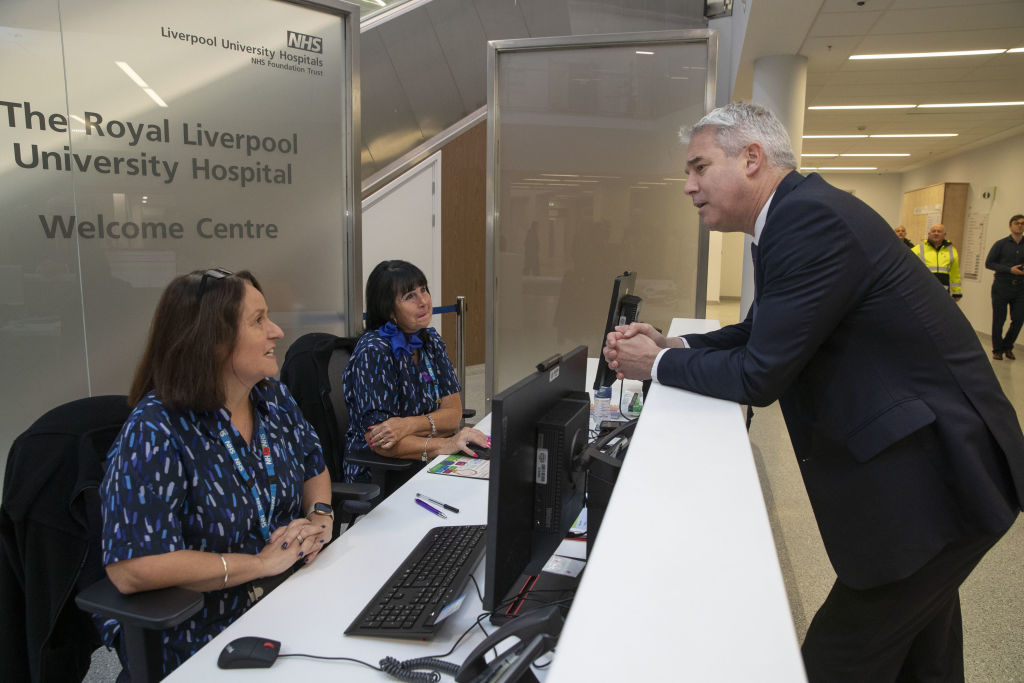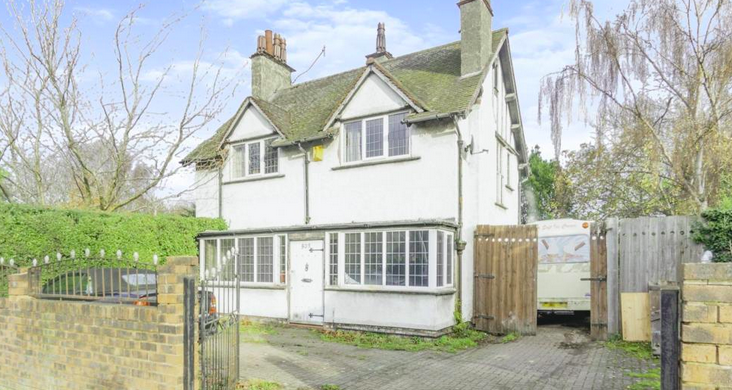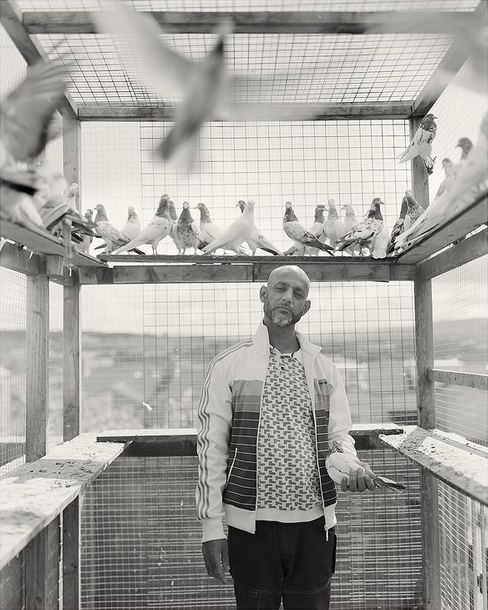‘Crowded, chaotic and unpleasant’: Is the new Royal Liverpool Hospital failing patients?

In a leaked letter, doctors at the £1 billion hospital say something has to give
Dear readers — come on in, step out of the cold. A warm welcome back to all 12,636 of you, but a doubly warm welcome to the 18 newest paid members who signed up over the weekend. May your January blues dissipate more quickly than anyone else’s, and may your 2023’s be rich and prosperous. You’ve taken us past 750 members at The Post, a milestone we’ve celebrated in style by draining the dregs of the Christmas wine. Hurrah!
Today’s big story comes courtesy of the Health Service Journal, who have published a leaked letter from senior medics at the Royal Liverpool Hospital describing themselves as “ashamed and demoralised” at the level of care being given to patients. We’ll delve into what’s causing the problems.
At the weekend we took a deep dive into the wonderful world of Liverpool ONE, 15 years after the council sold off 42 acres of city centre land to private property group Grosvenor in return for a sprawling matrix of TGI Fridays, Ted Bakers and table tennis tables. At the heart was the question: what price does a city pay for surrendering its public land? “Great article, examines all the pros and cons, and made me think twice about what we want OUR City to be,” said one happy commenter.
Such a good read!
— Dr Flloyd Kennedy (@Flloydwith2Ells) 11:15 AM ∙ Jan 8, 2023
Last week paying members received Edward Haynes’ freewheeling tour of Liverpool’s public art scene, from Alan Dunn and Brigitte Jurack’s The Ray + Julie Chairs to the highly controversial Superlambanana (one member called it “puerile and naive”: the sculpture, not the article, that is). On the former, Edward wrote:
“I sat on one of the chairs, the other empty across from me. It was hard and low enough to the ground that my long legs sprawled before me. Its position forces you to square up to the other chair, reminding you of a space for another person. Even though there were other people just metres away, it felt isolated, its own little bubble, just me and a chair.”
Coming up: Paying members will feast on two juicy pieces this week; on Tuesday about the role of the Royal Court in bringing theatre to the masses (after we went to see their most popular ever play); and on Thursday about the threat to Croxteth Hall’s historic collection of botanical plants. Then, at the weekend, we’ve got our big profile of Joe Anderson, who spoke to us in depth about his time as mayor of Liverpool and life since his fall from grace. We’d be interested to hear any thoughts readers might have about Anderson over the next week, so do get in touch at editor@livpost.co.uk, particularly if you have worked with him.
Editor’s note: The 1000 member milestone is visible on the horizon. Reaching that point in the coming months would not only make us financially secure for the future, but would allow us to expand what we do, bringing in a new full-time member of staff and taking on more investigative projects. It works out at £1.25 a week if you pay for an annual subscription, a small price to pay to give Liverpool and the rest of the city region the journalistic standards and scrutiny they deserve.
This week’s weather

This week’s weather forecast is sourced from the Met Office and it’s for Liverpool.
The big story: Is the new Royal Liverpool Hospital up to task?
Top line: A letter by staff at the new Royal Liverpool Hospital details the extent of the crisis in the NHS and the supposed shortcomings of the £1.1 billion facility. “We feel that the situation has reached a crisis point and we no longer have any control over the matter,” it reads.
The letter — signed by 30 senior medics and a clinical director and leaked to the Health Service Journal — was sent back on 8 November, but according to Lawrence Dunhill, who broke the story on Twitter, “senior sources say there's been no significant improvement in conditions or sentiment among the doctors.” It’s contents include claims that:
- The new hospital environment is “crowded, chaotic and unpleasant”.
- Staff are over-reliant on corridor care and patients are often spending up to 24 hours before being allocated a bed, which is “unacceptable and unsafe”.
- Staff are “ashamed and demoralised” and frequently in tears over the situation.
- Staff believe the decision to move to a smaller site (the move to the new Royal Liverpool, with fewer beds) was undertaken “without a contingency plan”.
Why so small? The older Royal Liverpool Hospital had 685 beds; the new one has 640 (though the Trust says there are 21 “transfer of care” beds at the Broadgreen Hospital site, with a further 10 beds in the community, meaning an overall reduction of only 14). Only weeks before the move, back in September, the hospital issued a warning that it was at “full capacity” even in the larger facility.
Sources who spoke to The Post in November about the new hospital suggested that there was a belief at the time it was planned (way back in the early 2000s) that the population was becoming healthier, and as such it made sense to prioritise the quality of care for individuals (each patient has their own room in the new building) above capacity. They also suggested that European legislation favoured the private room approach to combat the spread of infectious disease. The source said:
“They tried to predict ahead and miscalculated that a lower capacity would be required. The situation now is that you’ve got a far better building, but an inadequate number of beds. Lots of the staff I’ve spoken to are really, really angry”.

According to Dunhill, executives say the overall trust (which includes Aintree University Hospital) now has collectively more beds than before the move and that the pressures they face are “identical to those faced by hospitals across the UK”.
It isn’t only the Royal. Last week the BBC visited Whiston Hospital in Rainhill — an outstanding rated trust where corridor care is normally considered a rarity — which has been plunged into a similar state of crisis. One patient they met spent two full days in A&E before being allocated a ward for treatment of breathing issues. It describes:
“Trolley after trolley lined up along the corridor, each one with a patient lying on it and many with anxious relatives standing or sitting patiently next to them.”
According to Dunhill, “ongoing capacity problems” in social care are one of the root causes of the issues. At the time the new Royal hospital was designed, those in charge of planning “assumed there would be far more robust capacity in the community to ease demand on hospitals”. The current lack of social care capacity means hospitals are often unable to discharge patients who are otherwise fit to leave.
- Context: In this morning’s national newspapers, the inability of hospitals to discharge patients because of a lack of social care arrangements was described by the government as the main issue currently plaguing the NHS.
Bottom line: A multiplicity of factors, many of which applicable across the country, are being blamed for the current NHS crisis, including under-funding and capacity issues in social care. But the suggestion that the Royal moved to a new facility with fewer beds than before, without putting in adequate contingency measures, seems like a more self-inflicted wound. The worse the current issues become, the more scrutiny that decision will attract.
Your Post briefing
Asbestos exposure at a Liverpool shopping centre resulted in a diagnosis of mesothelioma, a deadly form of lung cancer, for Susan Ellis, who briefly visited in the 1960s. Susan Ellis worked for a firm of architects at the time and was sent on a series of site visits to Liverpool by her boss. Investigations have since shown that during one of those visits asbestos was sprayed onto the ceilings. Susan was diagnosed in 2018, and according to the Daily Mail, her experience is increasingly common: “while men account for most cases of mesothelioma, cases among women rose by 93 per cent between 1993 and 2018”. The average life expectancy for someone in Susan’s position is 15 months. Have you had an experience of asbestos exposure in Liverpool or the wider city region? Email editor@livpost.co.uk. All information will be treated with confidence.
Councillor Frazer Lake is a new deputy mayor at Liverpool City Council, despite the mayoral post being scrapped altogether in May. Lake has taken on the role of statutory deputy mayor from councillor Jane Corbett, meaning he will formally deputise for Joanne Anderson if required in the coming months (Corbett’s husband is retiring after 44 years as a vicar in Everton, meaning they will have to move house, during which she will “[take] a step back”). As the Echo reports, it is the second role change for Corbett in the last few months, after she left the finance brief following last year’s energy contract fiasco.
Two prison officers at HMP Liverpool will face trial for gross negligence manslaughter in November following the death of inmate Anthony Paine. Paine took his own life in 2018, and custodial manager Paul Fairhurst and senior officer Rachel Jameson were charged with failing to ensure his safety, following an investigation by Merseyside Police. Paine “had severe mental health problems”, according to the BBC, and was serving an 18 month sentence for affray and endangering the public after climbing onto a roof. At a hearing, neither Fairhurst nor Jameson entered pleas.
Fascinating insights from the Echo in their coverage of Prince Harry’s new autobiography Spare. The paper compiled a list of “bombshell” revelations in the book, billed as “the most eagerly-awaited memoir of 2023”. Perhaps the most eye-catching point on the list was news that Harry, after “conduct[ing] his own research”, found himself to be a supporter of former Labour leader Jeremy Corbyn. The Echo cited an outlet called Bazake Media, who had claimed that the Prince almost went public with his support for Corbyn, but was persuaded against it when the royal press office forced the late Queen to get down on her knees “and beg [him] to keep quiet”. Quite the story. The snag? Bazake Media is a parody publication. The Echo’s article has since been amended.
Home of the week

This large detached Wirral property could use a once-over with the feather duster, but it's got three bedrooms, a family bathroom, plenty of garden and is within easy reach of the big Harvester at Croft Retail Park. And all for £285,000. Take a virtual tour here.
Post Picks
🚶 Four and a half hours of walking in the January cold might sound like a fate worse than death, but along the beauty of the Wirral coastline it’s pure joy. What’s more, this walk — from Hoylake to New Brighton via Leasowe Castle — ends at the pub, as all good walks should. It’s organised by Freshwalks and you can book your spot here.
😂 Popular Scouse comedy podcast The Mild High Club is hosting a variety show with a twist at Phase One on Seel Street this Wednesday. Performers will pull their names out of a hat and will have just one minute to perform (“this could be anything from stand up comedy… to hammering nails into their own face,” apparently), all for a £50 cash prize. Tickets are £6.
🎭 A West End musical dubbed by The Observer “the best theatre show of the year” is in Liverpool this week. Girl From the North Country uses Bob Dylan songs to tell a story of love and family in a middle-America 1930 guest house filled with wayward souls. There are six performances between Wednesday and Saturday at the Liverpool Empire, with tickets starting from £13.
📸 Wirral based-photographer (and 2021 Sony Photographer of the year) Craig Easton showcases two separate series — Bank Top and Thatcher’s Children — at Open Eye Gallery from Thursday. It's worth it for the promotional photo, of a man staring down the lens from inside a bird coop, alone. The dual exhibition is entitled Craig Easton: Is Anybody Listening and it’s free to visit.

Our favourite reads
The latest in a string of prominent Conservative government ministers who grew up in Merseyside (Nadine Dorries, Thérèse Coffey) gets a profile in The Times. Gillian Keegan left school at 16 to work in a car factory in Kirkby, a move that “ignited an interest in politics that would lead to a top seat in government”. Her politics, we’re told, stem from the combined effects of witnessing Derek Hatton’s Militant control of Liverpool City Council, and from seeing union action in Kirkby, which in her words “blighted” the car manufacturing industry. Keegan — who went on to get a business degree at John Moores — is now tasked with quelling a potential strike herself, as she meets with teaching unions threatening industrial action this week.
Sean Weaver gives his take on outgoing mayor Joanne Anderson on his blog Spagbolitics. Suffice to say, it isn’t the most glowing appraisal. Weaver recalls meeting the mayor last year as a wave of violent crime swept through the night time economy. Frustrated industry leaders went to meet Anderson and a walk about the city centre at night with council officers and police in attendance was suggested. According to the piece, Anderson “outright refused”. It's an opinionated piece, but worth a read in how it expresses the frustrations of those who believe that the promise of a new dawn for the council after the embarrassment of 2021 has failed to materialise.
Few men can claim to have beefed with Al Pacino about how late is too late to turn up for a meeting, but Kirkby-born actor Stephen Graham can. Graham received an OBE in this year’s New Years Honours, so why not revisit this Guardian piece from 2021 which delves into his career and life. Graham, who broke through as sociopathic skinhead Combo in This is England, was told by his school careers officer to ditch acting and “get a job”, which his Dad ignored and took him to the video shop to rent Taxi Driver and The Deer Hunter instead. In his 20s he had a break down and attempted suicide, but now he’s credited with a one-man revival of the low-budget English drama and is one of the most acclaimed actors in the country.
Map of the week
Copenhagen is about the same size as Liverpool, and has four metro lines. One of these is a 16km loop, and it got me wondering, what would it look like if Liverpool had a similar sized line?
— Todd Lithgow (@LithgowTodd) 8:00 AM ∙ Jan 4, 2023
Imagine a vision of the future so magically far-fetched you’d think it was ripped from the pages of an ingenious Sci-fi novel. Here, Todd Lithgow shows us what a fully-functional 16km metro system — the same length as an existing one in Copenhagen — would look like in Liverpool. One for the dreamers.
Letters from readers
Whether Liverpool One is a "success" or not needs to be looked at in the context of the effect it has had on the rest of the city centre. I know the "high street" has struggled for many reasons, but in Liverpool, L1 has been a major factor. It shifted the centre away from Church St, meaning Bold St for instance, home of indies, was then further from the centre, and retail has suffered enormously there — the latest casualty being the iconic Rennies — every retail space closing has been taken over by food and drink outlets resulting in an unhealthy balance (read full comment here), ‘Is this paradise?: 15 years of Liverpool ONE’, Mandy Vere
Disappointing to see that the Superlambanana is still on Tithebarn Street. I love it and It deserves a prominent central location so that more visitors to the city can see it. It was nice to see that mini ceramic copies of it were given as souvenirs along with the medals at the recent gymnastics world championships at the arena, ‘Forgotten furniture to beloved icons: A stroll through Liverpool’s sculpture-filled streets’, Stevo

Comments
Latest
The council takes back Toxteth streets. But why were they given away in the first place?
The men who raised the flags
On the Wirral, public trust goes up in smoke
Gerard Woodhouse pleads guilty to harassment. “Jail him,” says his victim
‘Crowded, chaotic and unpleasant’: Is the new Royal Liverpool Hospital failing patients?
In a leaked letter, doctors at the £1 billion hospital say something has to give